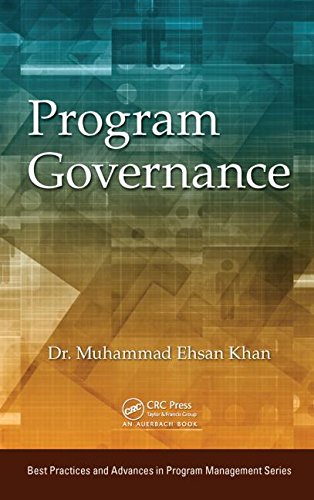

Most ebook files are in PDF format, so you can easily read them using various software such as Foxit Reader or directly on the Google Chrome browser.
Some ebook files are released by publishers in other formats such as .awz, .mobi, .epub, .fb2, etc. You may need to install specific software to read these formats on mobile/PC, such as Calibre.
Please read the tutorial at this link: https://ebookbell.com/faq
We offer FREE conversion to the popular formats you request; however, this may take some time. Therefore, right after payment, please email us, and we will try to provide the service as quickly as possible.
For some exceptional file formats or broken links (if any), please refrain from opening any disputes. Instead, email us first, and we will try to assist within a maximum of 6 hours.
EbookBell Team

4.4
52 reviewsAlthough program management has received much attention in recent books, program governance remains a relatively new subject. While selected books and standards touch on this important topic, few are devoted to program governance as a subject. This book fills that need.
Program Governance provides a thorough understanding of governance while reviewing the underlying theories. The first book dedicated to this subject, it caters to the needs of practitioners, researchers, and students of management and governance.
The book provides a holistic view of program governance while covering multiple elements of program governance. Topics covered include the governance structure, governance roles, governance functions, governance mechanisms, factors influencing the governance framework, and different domains of programs that come under the jurisdiction of a governance framework.
The book presents the author’s own program governance framework, called the Contingent Governance Framework for Programs (CGFPrgTM), which is adaptable to suit different program contexts. This adaptability ensures that the different elements of governance, including structure and mechanisms, are aligned with program requirements. Such alignment results in an efficient and effective environment with an increased probability of program success.
The text supplies references to research and case studies to help readers understand key concepts in more detail. It also includes objectives at the end of each chapter to help readers gauge their knowledge of the subject.
The book clarifies the linkage/dependencies between program governance and other governance levels, such as international governance and corporate governance, which have a strong influence on governance framework for programs. It also explains the difference between the dynamics of temporary organizations, such as projects and programs, and permanent organizations. This distinction between temporary and permanent organizations provides readers with a practical understanding of how governance should be implemented in both types of organizations.